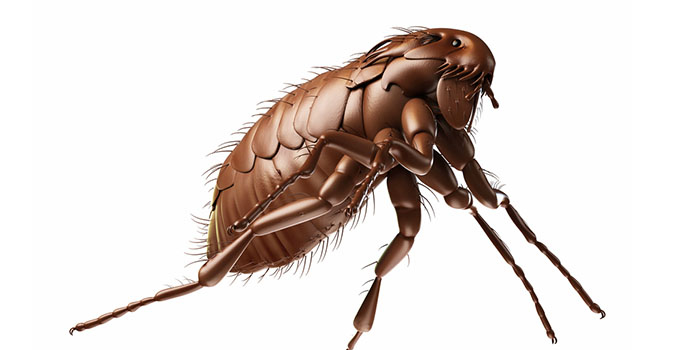
We’re the leading providers of pest control exterminator services for Fleas Ticks in Union NJ
Please give us a call at 908 982 4718 in order to get started with the process.
Fleas
Flea, the common name for the order Siphonaptera, includes 2,500 species of small flightless insects that survive as external parasites of mammals and birds. Fleas live by consuming blood, or hematophagy, from their hosts. Adult fleas grow to about 3 mm (0.12 in) long, are usually brown, and have bodies that are “flattened” sideways or narrow, enabling them to move through their host’s fur or feathers. They lack wings, but have strong claws preventing them from being dislodged, mouthparts adapted for piercing skin and sucking blood, and hind legs extremely well adapted for jumping. They are able to leap a distance of some 50 times their body length, a feat second only to jumps made by another group of insects, the superfamily of froghoppers. Flea larvae are worm-like with no limbs; they have chewing mouthparts and feed on organic debris left on their host’s skin.
The Siphonaptera are most closely related to the snow scorpionflies, or snow fleas in the UK, formally the Boreidae, placing them within the Endopterygote insect order Mecoptera. Fleas arose in the early Cretaceous, most likely as ectoparasites of mammals, before moving on to other groups, including birds. Each species of flea is more or less a specialist with respect to its host animal species: many species never breed on any other host, though some are less selective. Some families of fleas are exclusive to a single host group; for example, the Malacopsyllidae are found only on armadillos, the Ischnopsyllidae only on bats, and the Chimaeropsyllidae only on elephant shrews.
The oriental rat flea, Xenopsylla cheopis, is a vector of Yersinia pestis, the bacterium which causes bubonic plague. The disease was spread to humans by rodents such as the black rat, which were bitten by infected fleas. Major outbreaks included the Plague of Justinian, c. 540 and the Black Death, c. 1350, both of which killed a sizeable fraction of the world’s population.
Fleas appear in human culture in such diverse forms as flea circuses, poems like John Donne’s erotic The Flea, works of music such as by Modest Mussorgsky, and a film by Charlie Chaplin.
Ticks
Ticks (Ixodida) are arachnids, typically 3 to 5 mm long, part of the superorder Parasitiformes. Along with mites, they constitute the subclass Acari. Ticks are external parasites, living by feeding on the blood of mammals, birds, and sometimes reptiles and amphibians. Ticks evolved by the Cretaceous period, the most common form of fossilisation being amber immersion. Ticks are widely distributed around the world, especially in warm, humid climates.
Almost all ticks belong to one of two major families, the Ixodidae or hard ticks, and the Argasidae or soft ticks. Adults have ovoid or pear-shaped bodies, which become engorged with blood when they feed, and eight legs. In addition to having a hard shield on their dorsal surfaces, hard ticks have a beak-like structure at the front containing the mouthparts, whereas soft ticks have their mouthparts on the underside of their bodies. Both families locate a potential host by odour or from changes in the environment.
Ticks have four stages to their lifecycle, namely egg, larva, nymph, and adult. Ixodid ticks have three hosts, taking at least a year to complete their lifecycle. Argasid ticks have up to seven nymphal stages (instars), each one requiring a blood meal. Because of their habit of ingesting blood, ticks are vectors of many diseases that affect humans and other animals.
